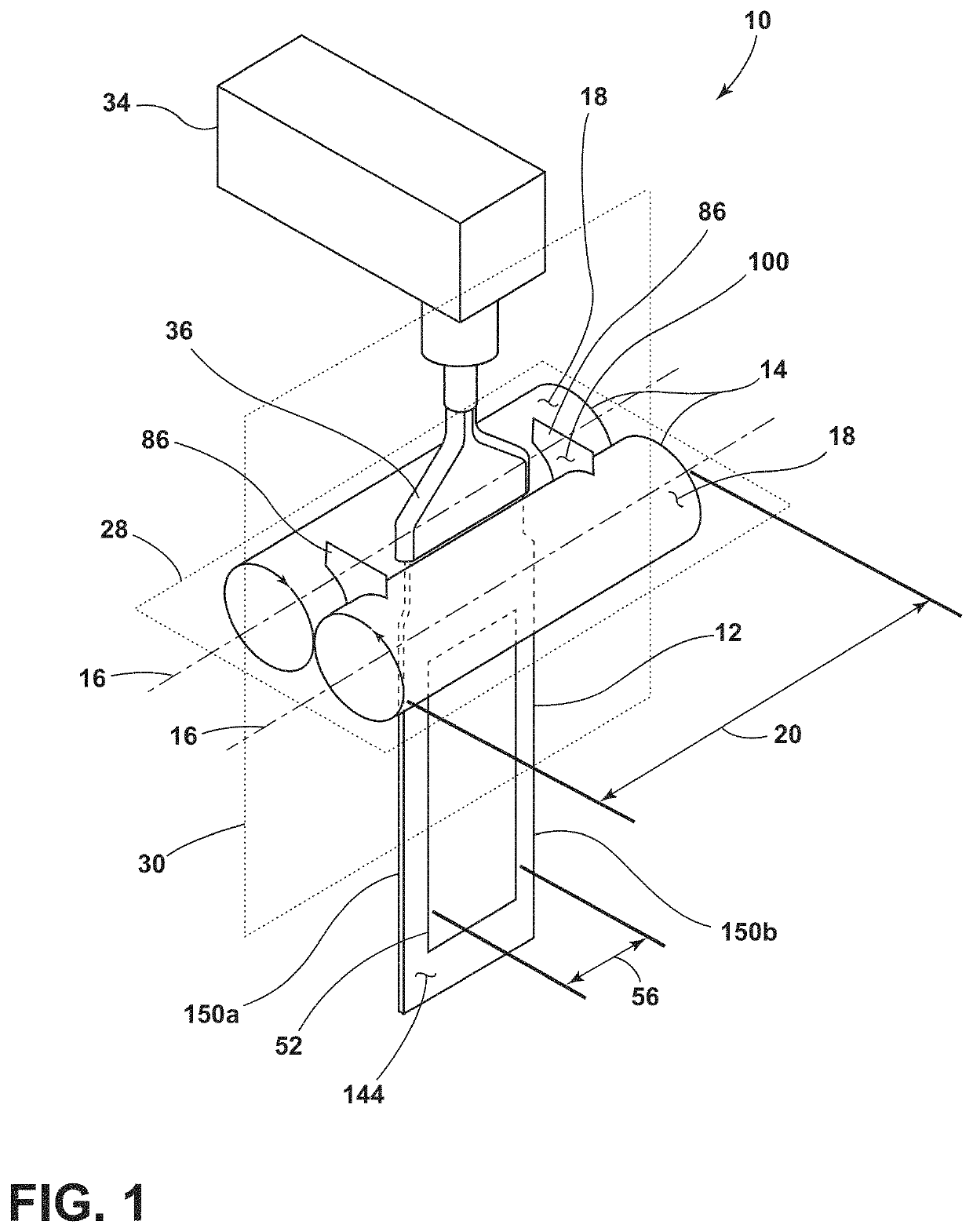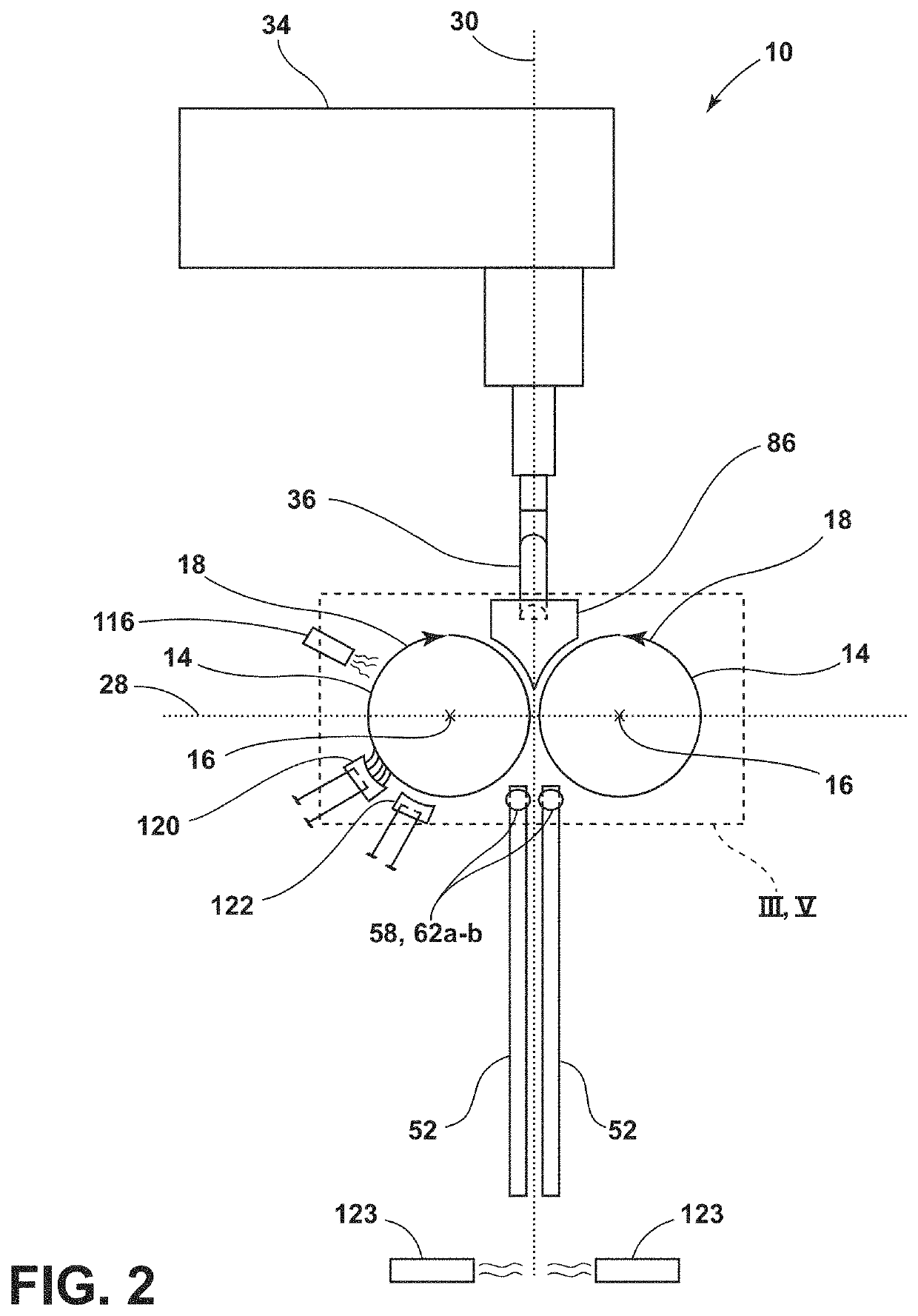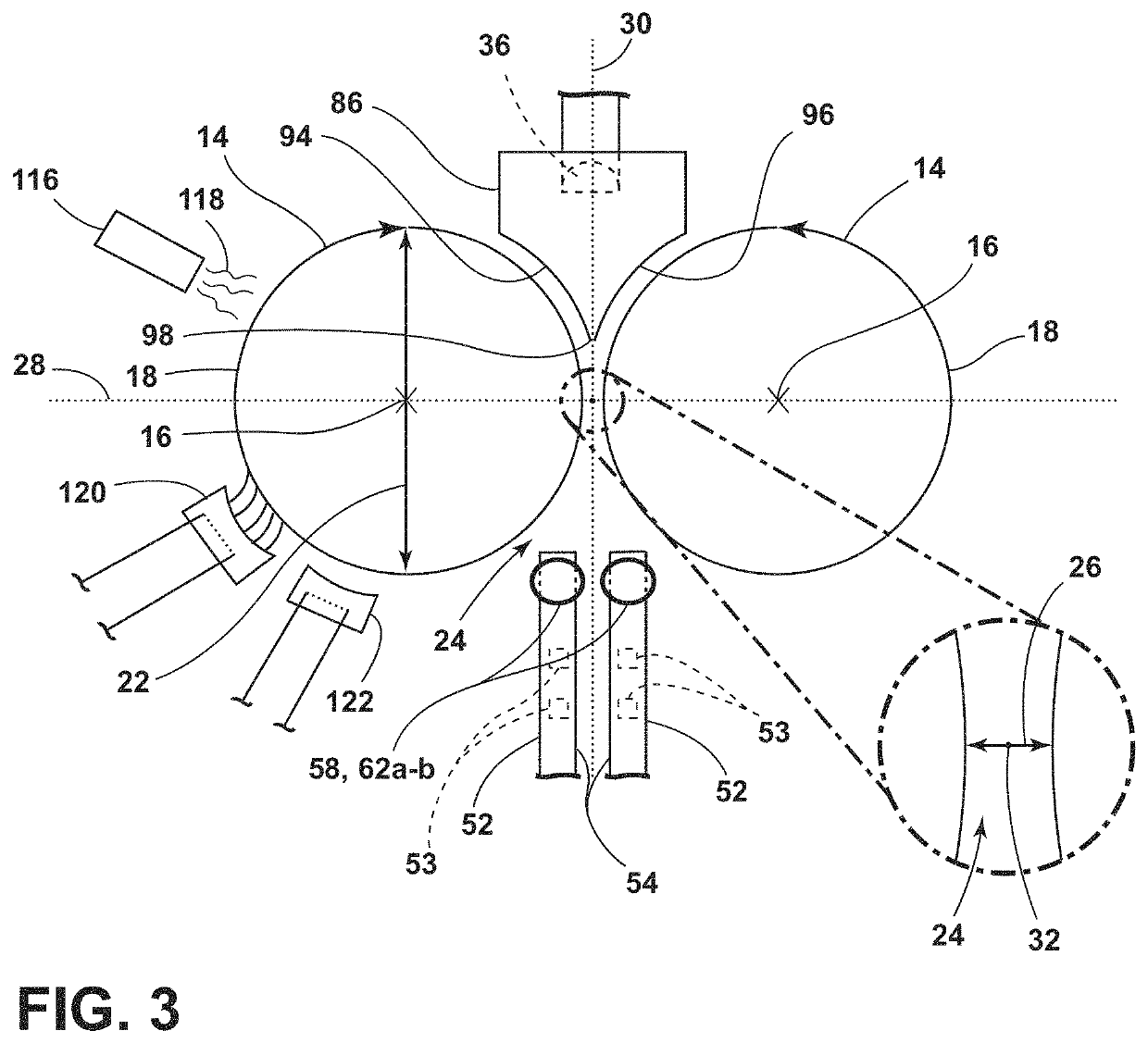Apparatus for, and method of, roll forming sheets of high refractive index glass
a technology of refractive index glass and apparatus, which is applied in the field of apparatus for and method of roll forming sheets of high refractive index glass, can solve the problems of warpage, fracture of glass ribbons, and suboptimal total thickness variation of separated glass sheets
- Summary
- Abstract
- Description
- Claims
- Application Information
AI Technical Summary
Benefits of technology
Problems solved by technology
Method used
Image
Examples
example 1
[0149] For Example 1, two ribbons of glass were formed using two different sets of forming rollers—a first set having an outer diameter of 4 inches (˜101 mm) and a second set having an outer diameter of 2 inches (˜51 mm). A single tube outlet feed device was utilized to supply the stream of molten glass to the gap between the sets of forming rollers to form the puddle of molten glass. The same flow rate of molten glass was delivered to each of the sets of forming rollers. No dams were utilized to adjust the width or the height of the puddle of molten glass.
[0150]With the set of forming rollers with the 4-inch outer diameter, a ribbon of glass was produced having a thickness of 6.1 mm and a width of 89 mm. With the set of forming rollers with the 2-inch outer diameter and the same flow rate of molten glass, (i) a ribbon of glass was produced having a smaller thickness of 4.6 mm and slightly larger width of 106 mm, and (ii) a ribbon of glass was produced having a larger width of 140 m...
example 6
[0158] For Example 6, a single tube outlet feed device was utilized to supply the stream of molten glass to the gap between the forming rollers to form the puddle of molten glass. No dams were utilized to adjust the width or the height of the puddle of molten glass. The forming rollers formed a ribbon of glass from the puddle of molten glass. A pair of pinching rollers were utilized to reduce the thickness of the second lateral edge of the ribbon of glass but not the first lateral edge of the ribbon of glass. The pair of pinching rollers reduced the thickness of the ribbon of glass at the second lateral edge from 3 mm to 2.26 mm. The thickness of the ribbon of glass near the second lateral edge was about 2.2 mm. The thickness of some portions of the ribbon of glass were reduced to 1.9 mm.
[0159]The horizontal temperature profile was measured at a horizontal position before the pair of pinching rollers reduced the thickness of the second lateral edge of the ribbon of glass. The horizo...
PUM
| Property | Measurement | Unit |
|---|---|---|
| Temperature | aaaaa | aaaaa |
| Fraction | aaaaa | aaaaa |
| Fraction | aaaaa | aaaaa |
Abstract
Description
Claims
Application Information
 Login to View More
Login to View More - R&D
- Intellectual Property
- Life Sciences
- Materials
- Tech Scout
- Unparalleled Data Quality
- Higher Quality Content
- 60% Fewer Hallucinations
Browse by: Latest US Patents, China's latest patents, Technical Efficacy Thesaurus, Application Domain, Technology Topic, Popular Technical Reports.
© 2025 PatSnap. All rights reserved.Legal|Privacy policy|Modern Slavery Act Transparency Statement|Sitemap|About US| Contact US: help@patsnap.com



